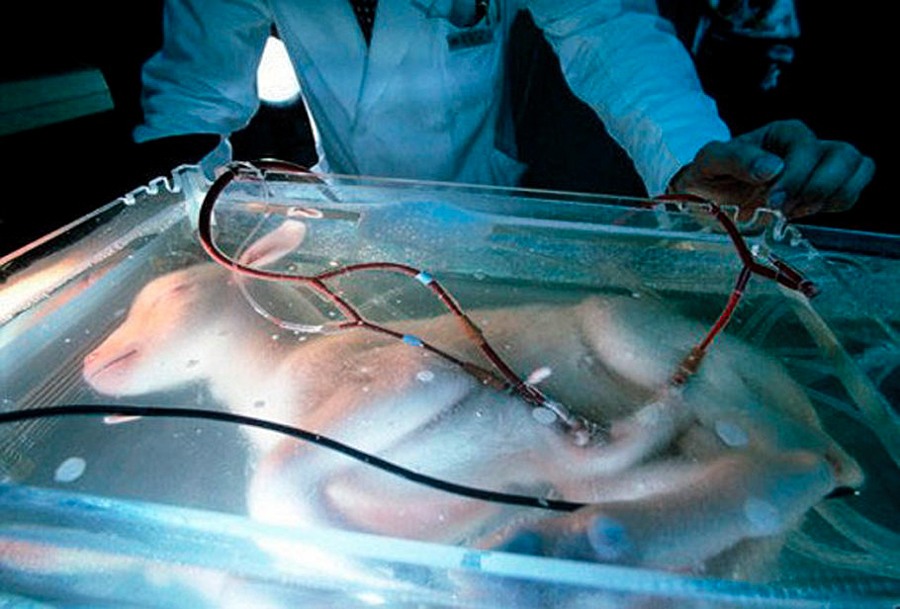Technology is changing at a breakneck speed and growing more sophisticated every year. Since 2001, the MIT Technology Review has released an annual list of 10 Breakthrough Technologies they believe will have a great impact on how we live now as well as in the years to come. Some of their picks represent technologies on the verge of commercial use, while others are still being developed. Here’s what they think is in store for 2018.
1. 3D Metal Printing

3D printing has moved beyond hobbyists producing one-offs to being a viable way to manufacture things on a large scale. (The cost has gone down considerably.) For the short term, it means that factories wouldn’t be required to have large inventories and could print on demand. “In the longer term,” MIT writes, “large factories that mass-produce a limited range of parts might be replaced by smaller ones that make a wider variety, adapting to customers’ changing needs.”
2. Artificial Embryos

This advance could change life as we know it. Embryologists at the University of Cambridge successfully grew “realistic-looking mouse embryos” using just stem cells—meaning that there was no egg or sperm necessary to form it. The next step is to make an artificial embryo of a human. “Synthetic human embryos would be a boon to scientists, letting them tease apart events early in development,” MIT explains. “And since such embryos start with easily manipulated stem cells, labs will be able to employ a full range of tools, such as gene editing, to investigate them as they grow.”
3. Sensing City

Most cities are retrofitting technology into their infrastructure to become a “smart city.” But for a neighborhood called Quayside in Toronto, they are building in tech from the ground up. One goal of the project is to gather data using a network of sensors which will inform us of air qualities, noise levels, and the activities people engage in during the day. Another facet of Quayside will be robots that “roam underground doing menial chores like delivering the mail.”
4. AI for Everybody

Artificial intelligence is becoming more ubiquitous, but it’s often too expensive for startups and smaller companies. Companies such as Amazon, Google, and Microsoft are integrating machine-learning tools into the crowd that will help others use it and potentially change parts of the economy that are beyond Silicon Valley—think medicine, or even energy.
5. Dueling Neural Networks

AI has become good at certain things—like looking at pictures and picking out a car—but when it comes to things that require imagination (such as creating an image of a car), it’s incapable of it. Thanks to a generative adversarial network, aka GAN, researchers have found a workaround. GAN takes two neural networks and “pits them against each other in a digital cat-and-mouse game.” Both networks understand the same dataset; one is the generator and creates variations of images it’s seen before. Its opponent (the discriminator) then identifies whether these images were produced by the generator. Over time, the generator becomes so adept at producing pictures that the discriminator can’t tell it’s fake.
6. Babel-Fish Earbuds

Grab a pair of Pixel Buds and you’ll be able to translate a different language in real time. This is revolutionary for when you travel to a foreign land and need translation. To use it, one person wears the special earbuds and the other person speaks in their language. The Google Translate app then plays back the translated response.
7. Zero-Carbon Natural Gas

Natural gas, while cleaner than coal, still leaves a big carbon footprint. But travel to Houston, Texas and you’ll find a special power plant that’s testing technology that could “make clean energy from natural gas.” A company called Net Power is behind this, and their hope is that they can generate power that’s as cheap as its conventional form. So, how does it work? “The plant puts the carbon dioxide released from burning natural gas under high pressure and heat,” MIT explains, “using the resulting supercritical CO2 as the ‘working fluid’ that drives a specially built turbine. Much of the carbon dioxide can be continuously recycled; the rest can be captured cheaply.”
8. Perfect Online Privacy

A tool originally developed for blockchains holds the key to true online privacy. Through the zk-SNARK method, users can act anonymously but still be secure. This was originally developed for Zcash, a digital cryptocurrency created in 2016. Its power is already being used; JPMorgan chase added zk-SNARKs to its blockchain-based payment system in 2017.
9. Genetic Fortune-Telling

Would you want to know what your likelihood of developing Alzheimer’s is? What about getting hooked on tobacco? Thanks to more sophisticated DNA tests, there are new possibilities to what we can find out about ourselves. The big question is how will we, and others who know our genetic information (including IQ) use that information?
10. Materials’ Quantum Leap

Throughout science, researchers are dreaming of ways to improve our world. One of the things stopping them is that it’s too hard to model molecules on a “classical computer”—doing so is too complex for today’s machines. But IBM recently used what’s called a quantum computer to successfully replicate a small molecule made of three atoms. This is just the start, and it means that it’ll become possible to eventually simulate larger and “more interesting molecules.”

